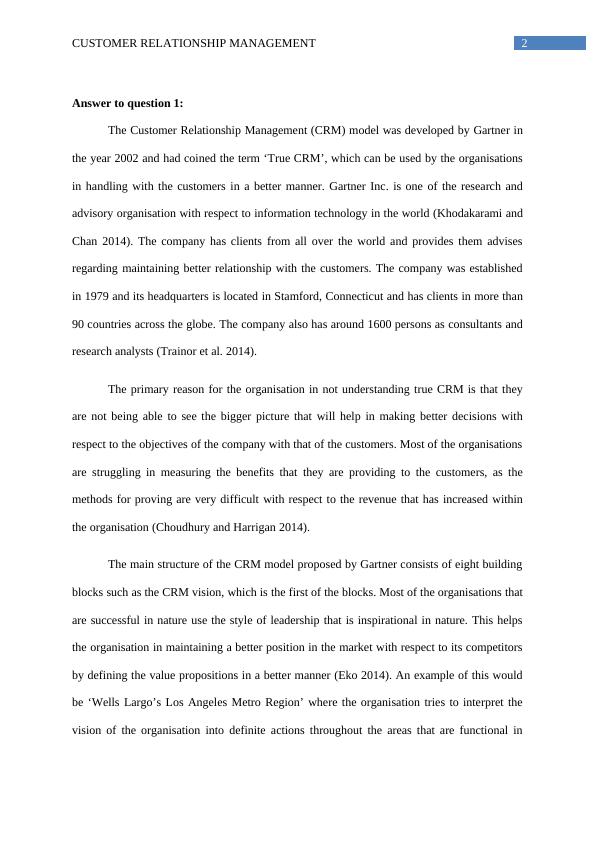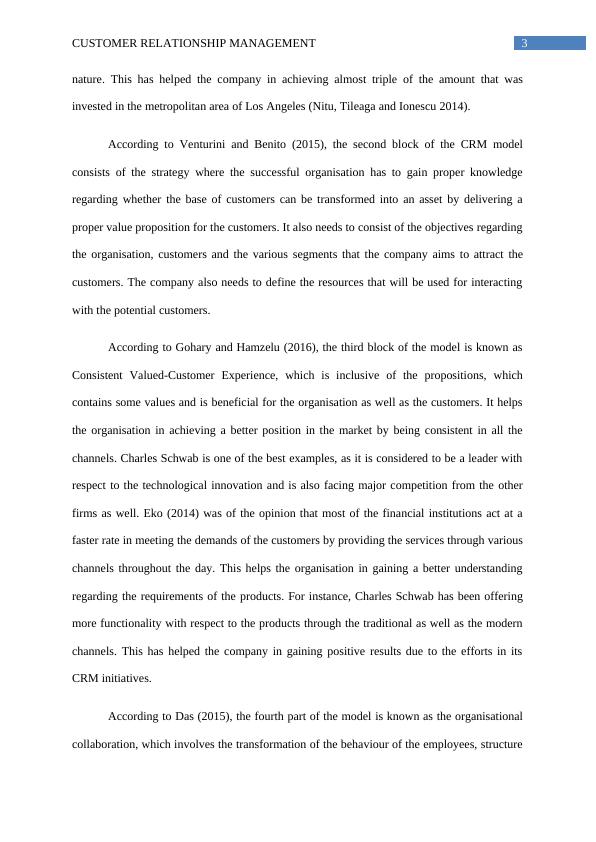Customer Relationship Management Model
14 Pages4168 Words187 Views
Added on 2021-04-24
About This Document
CUSTOMER RELATIONSHIP MANAGEMENT 10 CUSTOMER RELATIONSHIP MANAGEMENT Customer Relationship Management Name of Student Name of University Author Note Table of contents Answer to question 1: 2 Answer to question 2: 6 Reference List 11 Answer to question 1: The Customer Relationship Management (CRM) model was developed by Gartner in the year 2002 and had coined the term ‘True CRM’, which can be used by the organisations in handling with the customers in a better manner. This has helped the organisation in maintaining a better position in the market
Customer Relationship Management Model
Added on 2021-04-24
ShareRelated Documents
End of preview
Want to access all the pages? Upload your documents or become a member.
Customer Service Management for Tourism & Hospitality INTRODUCTION
|11
|3293
|90
Report on Customer Service Management for Tourism & Hospitality
|13
|3578
|287
Customer Service Management for Tourism & Hospitality : Assignment
|11
|3774
|46
Gartner CRM Model for Dale Hotels
|15
|4011
|37
Customer Service Management for Tourism and Hospitality - MOD006060
|16
|4232
|239
Customer Service Management for Tourism and Hospitality INTRODUCTION
|12
|3728
|413




